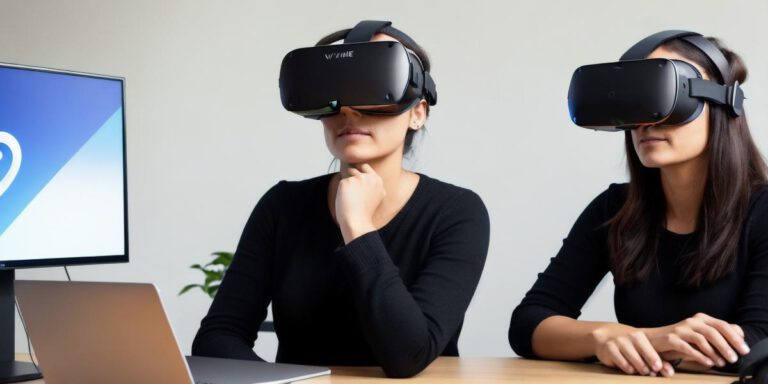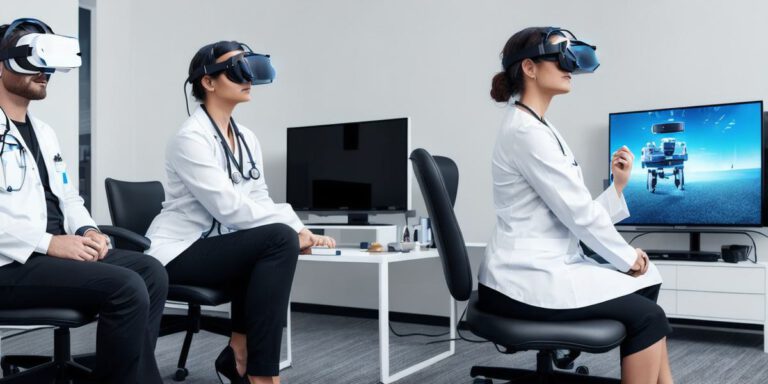VR Teleconsultations: Enhancing Patient-Provider Interactions and Access to Care from Anywhere

With the advancement of technology, telemedicine is becoming an increasingly popular way for patients to access healthcare services. Virtual reality (VR) teleconsultations are a newer form of telemedicine that has the potential to revolutionize patient-provider interactions and improve access to care from anywhere in the world.
One of the key benefits of VR teleconsultations is that they can enhance patient-provider interactions. In traditional telemedicine, patients and providers are separated by a screen, which can make it difficult for them to build trust and establish a rapport. VR technology, on the other hand, allows patients and providers to interact in a more immersive way. For example, a surgeon could use VR to remotely perform surgery on a patient, allowing them to see and interact with the patient in real-time.
In addition to enhancing patient-provider interactions, VR teleconsultations can also improve access to care from anywhere in the world. This is particularly important for patients who live in rural areas or have difficulty traveling long distances to see a healthcare provider. With VR teleconsultations, patients can receive medical consultations and treatments without having to leave their homes.
There are many real-life examples of how VR teleconsultations are being used to enhance patient care. For example, the University of California San Francisco (UCSF) is using VR technology to perform remote surgeries on patients in developing countries. In one case, a UCSF surgeon performed a complex ear surgery on a patient in Kenya using VR technology, allowing them to see and interact with the patient in real-time. This not only improved the quality of care for the patient but also allowed the UCSF surgeon to gain valuable experience working in a developing country.
Another example is the use of VR teleconsultations for mental health treatment. A study published in the Journal of Medical Internet Research found that patients who received therapy through VR teleconsultations had similar outcomes to those who received in-person therapy. This suggests that VR technology could be a viable alternative to traditional therapy, especially for patients who live far from a healthcare provider or have mobility limitations.
However, there are also some challenges associated with VR teleconsultations. One of the main concerns is ensuring that patients have access to the necessary technology and internet connectivity. In addition, there are concerns about the privacy and security of patient data during virtual consultations.
Despite these challenges, the potential benefits of VR teleconsultations are clear. By enhancing patient-provider interactions and improving access to care from anywhere in the world, VR technology has the potential to revolutionize healthcare delivery. As more research is conducted on the effectiveness of VR teleconsultations, we can expect to see even more innovative uses of this technology in the future.
FAQs:
- What are VR teleconsultations?
- How do VR teleconsultions enhance patient-provider interactions?
- How can VR teleconsultions improve access to care from anywhere in the world?
- What are some challenges associated with VR teleconsultions?
- What is the potential future of VR teleconsultions in healthcare delivery?








